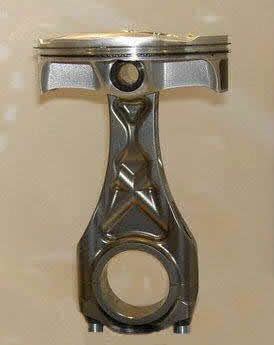This is from the very extreme end of things - Early 2000's Cosworth Formula 1 piston and con-rod. 3.0 L V10's turning 20,000+ RPM with a life span measured in dozens of minutes.
Rod Lengths were generally around 100 mm (4 in) on strokes of about 40 mm (1 9/16") making for approx a 2.5:1 rod/stroke ratio.

The last version of the NA, F1 engines, was the 2.4L (engine went from 10 to 8 cyl). Cosworth was the only one that ran 20,000+ rpm, all the others stayed closer to 19K.
I ran across this NASCAR/F1, comparison chart, about a week ago and regarding rod/stroke ratio, the two organizations, that have put much more money in research than all others combined, use a high ratio. 2.564 for F1 and 1.907 for NASCAR.
In those organizations, it may be more for reliability rather than HP but, neither would over look the HP aspect.